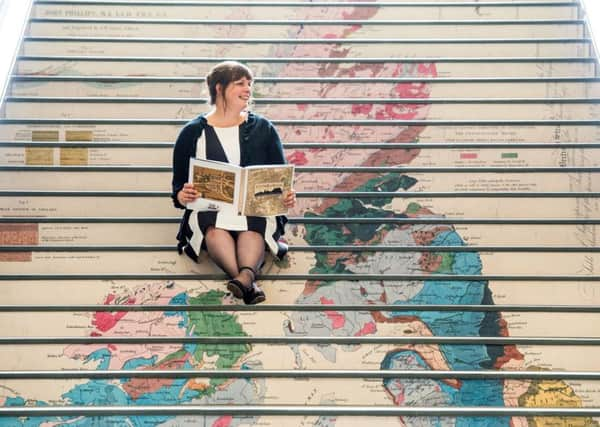Map of Edinburgh smells on display at National Library
This article contains affiliate links. We may earn a small commission on items purchased through this article, but that does not affect our editorial judgement.


Brewery fumes, the aromas from coffee bars, fish and chip shops and fresh-cut grass all have pride of place on a “smells map” of Edinburgh.
Now graphic designer Kate McLean’s work is to get a starring role in a major new exhibition charting the history of map-making around the world.
Advertisement
Hide AdAdvertisement
Hide AdIt is on display at the National Library of Scotland from today along with a host of centuries-old cartographic treasures, including the first printed map of the nation. The George IV Bridge attraction has one of just three copies of gifted Italian engraver Paolo Fortani’s handiwork, which he produced without even visiting Scotland, drawing inspiration from an early map of Britain.
It is offering visitors a rare chance to inspect the 1560 map alongside a host of ground-breaking and unusual maps charting the evolution of Edinburgh, Scotland and Europe since the 16th century.
Drawn from more than two million items in the library’s collection of maps, one of the biggest in the world, the exhibition features everything from an 1834 chart of the Firth of Forth to an intricately detailed map of the city created in 1780 by John Ainslie, the outstanding Scots cartographer of the 18th century.
The show, You Are Here, which runs until April 3, includes a map of Britain’s horse-race meetings in 1907, a population density chart of the UK from 1849 and a railway and steamship map of Europe, designed for tourists in 1930.
Planned long before the Brexit vote, the exhibition offers a timely opportunity to relive a map of Europe produced in 1815, highlighting its “political divisions”.
There is also a war map of Europe created when conflict broke out in 1914, and a United Nations world map made in the wake of the Second World War.
Forlani’s map of Scotland, which has evidence of its Venetian origins in its watermarks, is being featured in a major exhibition for the first time since being purchased from the Royal Scottish Geographical Society, which was given the map in 1919.
Advertisement
Hide AdAdvertisement
Hide AdA highlight is a chance to see a map of the world from the 17th-century Dutch “Blaeu Atlas Maior”, which runs to 11 volumes, 594 maps and 3368 pages of text.
The exhibition also explores the skills needed to produce accurate maps and features a memory board where visitors will be invited to pinpoint their favourite places in Edinburgh.
Exhibition curator Paula Williams said: “We hope that by travelling from Edinburgh all the way to the ends of world people will think a little bit more about how maps are made and how we use them.
“We’re all so used to having maps on our phones and tablets, and using Ordnance Survey, that we assume they are accurate and true but, of course, they’re not. As soon as you shrink down the world you have to leave stuff out.”
DOWNLOAD THE SCOTSMAN APP ON ITUNES OR GOOGLE PLAY